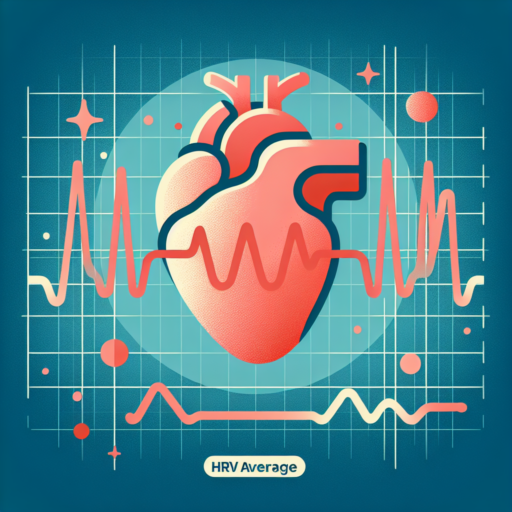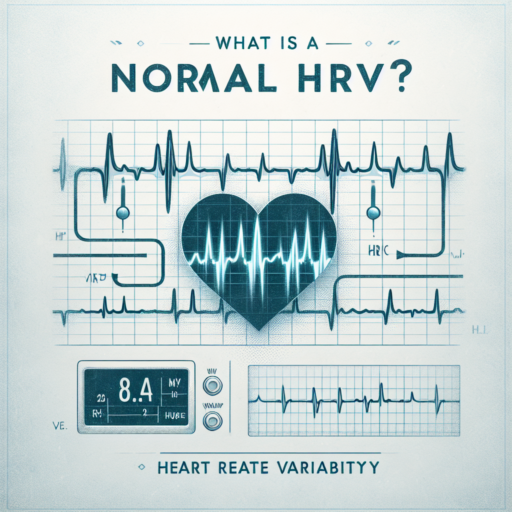No se han encontrado productos.
What is a good HRV for my age?
Understanding what constitutes a good Heart Rate Variability (HRV) for your age is crucial as HRV varies widely among individuals and across different age groups. HRV, essentially a measure of the variation in time between each heartbeat, is considered an indicator of your autonomic nervous system function and overall heart health. Generally, a higher HRV signifies stronger cardiovascular health and stress resilience, whereas a lower HRV can indicate stress, fatigue, or underlying health issues.
Age-Related HRV Norms
The relationship between HRV and age is not linear, with HRV tending to decrease as people age. This is due to the natural decline in heart flexibility and the autonomic nervous system’s responsiveness. Children and young adults typically have higher HRV values, reflecting vibrant health and stress resilience. However, determining «good» HRV values requires examining specific ranges that are appropriate for various age groups. For example, individuals in their 20s might have higher average HRV readings compared to those in their 50s or 60s.
HRV Range for Different Ages
While specific HRV norms can vary depending on the measuring device and the time of day the measurement is taken, typical healthy ranges have been identified across age groups. These ranges serve as a reference to understand where your HRV may stand in comparison with others in your age group. For instance, a healthy HRV for someone in their 20s might be between 55-105 ms (milliseconds), while for those in their 50s, a range of 25-45 ms could be considered healthy. It’s important to note that these ranges are indicative, and individual factors such as fitness levels, stress, and lifestyle choices play a significant role in determining one’s HRV.
Ultimately, understanding your HRV and how it compares to norms for your age group can offer valuable insights into your cardiovascular and general wellness. It provides a tool for monitoring changes over time, enabling more informed decisions related to stress management, exercise, and other health-related behaviors. Regularly tracking your HRV, in conjunction with professional medical advice, can help in maintaining or improving your heart health irrespective of your age.
What is a good heart rate variability number?
Understanding what constitutes a good heart rate variability (HRV) number is essential for assessing your overall heart health and fitness. HRV refers to the variation in time between each heartbeat, and rather than striving for a single «good» number, it’s important to know that HRV is highly individualized. Generally, a higher HRV indicates better autonomic nervous system balance, stress resilience, and cardiovascular fitness.
Factors Influencing HRV
Age, fitness level, and lifestyle choices are among the key factors that can significantly impact your HRV. Younger individuals and those with higher levels of physical fitness often exhibit higher HRV numbers, reflecting more robust heart health and stress resilience.
Range of HRV
While pinpointing a universal «good» HRV number is challenging due to personal variances, studies suggest an average HRV for adults ranges from 20 to 99 milliseconds (ms) depending on age and activity levels. It is important to monitor your HRV over time to understand your body’s baseline and track any significant fluctuations which may indicate changes in health or fitness.
Remember, a good HRV is less about achieving a specific number and more about the insights it provides into your health and well-being. Observing changes in your HRV and discussing them with a health professional can be valuable for maintaining or improving your heart health and overall fitness.
Should I worry if my HRV is low?
Understanding your Heart Rate Variability (HRV) is crucial as it reflects your body’s ability to manage stress and maintain balance. A low HRV can be a sign that your body is under stress, either from physical exertion, lack of sleep, emotional stress, or even illness. However, interpreting whether a low HRV warrants concern involves considering various factors.
Firstly, it’s essential to know that HRV differs greatly among individuals. What is considered low for one person might be normal for another. Likewise, daily fluctuations are common; thus, a single low reading shouldn’t trigger immediate worry. Consistently low HRV over time, however, could indicate that your body is not recovering well from stress. This could compromise your overall well-being, leading to decreased performance, mood, and immune response.
It’s also imperative to consider the context of your lifestyle and health when evaluating HRV. Factors such as age, fitness level, and health conditions can influence your baseline HRV. For athletes, a temporary dip in HRV might signal overtraining. For the average person, it could reflect poor sleep quality, high stress levels, or unhealthy lifestyle choices. Therefore, monitoring changes over time and in relation to lifestyle changes is more telling than isolated measurements.
Is 15 ms a good HRV?
When discussing heart rate variability (HRV), it’s essential to understand what the numbers signify. A 15 ms HRV might raise questions about its adequacy. HRV measures the variation in time between each heartbeat, and it’s an indicator of your autonomic nervous system’s balance. Generally, a higher HRV suggests better cardiovascular fitness and stress resilience.
Factors Influencing HRV
However, interpreting HRV, such as a 15 ms reading, cannot be done in isolation. Several factors can influence your HRV, including age, fitness level, lifestyle, and even the time of day the measurement is taken. Typically, younger, healthier individuals tend to have higher HRVs. Thus, while a 15 ms HRV might be concerning to some, it could be normal for others, depending on these variables.
Understanding the context and comparative baselines is crucial before determining if 15 ms is a «good» HRV for you. This measurement alone doesn’t provide a full picture of one’s health or fitness level. Engaging with healthcare professionals and utilising continuous monitoring can help in making a more accurate assessment.
In summary, a 15 ms HRV can vary in significance based on individual circumstances. It’s recommended to consider multiple factors and, if possible, track changes over time to better understand personal HR — without jumping to conclusions based on a single measurement.




